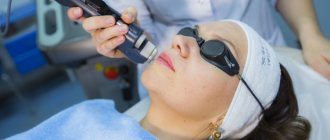Saving from cancer requires great sacrifices, they just say “cut out the tumor”, in fact, even a tiny tumor is removed “in one block” with adjacent tissues and lymph nodes of several levels. A breast cancer tumor up to 5 cm with axillary lymph nodes suspicious for the presence of metastases is removed along with the gland and axillary, subclavian and even subscapular subcutaneous fat. A huge lymphatic collector is removed, carrying lymph from half the organs of the chest and arms, but nothing remains in return. And where should the fluid move if the lymph nodes are no longer there, and only a postoperative scar remains on the way to the thoracic lymphatic duct?
Today, it is possible to remove small breast tumors with part of the organ, but a partial organ-preserving operation still requires removal of the lymph nodes affected by metastases and mandatory postoperative radiation. Seriously damaged soft tissues become much denser with the formation of scars, and again the lymphatic fluid stagnates in the vessels, because there is nowhere for it to move - there are no lymph nodes. And this happens not only during breast surgery, but also during irradiation of the uterus or removal of lymph nodes in the inguinal and retroperitoneal regions for testicular tumors, sarcomas and melanomas of the lower extremities.
Lymphedema as it is
This disease is sometimes called “elephantiasis” (elephantiasis, elephantiasis, elephantiasis), which in general is not entirely correct. However, an analysis of terminological subtleties is beyond the scope of this material, and the patient is much more interested in issues of a speedy cure. In general, lymphedema is a progressive swelling of soft tissues, usually of the lower extremities, resulting from a violation of the natural outflow of fluid through the lymphatic vessels .
Human lymphatic system
In other words, chronic blockage of the lymphatic drainage pathways, which with some assumption can be called the basis of the body’s sewer system, leads to the accumulation of toxins and “waste material.” Therefore, the remains of leukocytes, bacteria and other foreign substances, instead of leaving the body, begin to be deposited in soft tissues, which leads to edema.
To complete the picture, statistical data can be provided. To one degree or another, problems with lymph drainage occur in every tenth inhabitant of the planet, and about 10 million people suffer from pronounced lymphedema, provoked by one or another chronic infection. In general, from 2.5% to 7% of all patients diagnosed with peripheral vascular disease suffer from this disease, and the numbers are showing a strong upward trend.
Treatment
Treatment of lymphostasis is primarily aimed at restoring normal outflow and normalizing the functioning of the limbs as soon as possible. Let's consider the main methods that can be used to eliminate this disease:
- One of the effective methods is massage of the lower extremities. This activates the circulatory system and normalizes water balance, which, among other things, will strengthen the walls of blood vessels, making them more elastic.
- The patient is prescribed physiotherapeutic procedures, such as magnetic therapy.
- Experts recommend visiting the pool.
- Drug treatment includes the following drugs:
- which help normalize blood circulation;
- immunomodulators and vitamins;
- vetonotics, which significantly increase the tone of the vein walls;
- drugs that remove fluid from the body and relieve swelling.
People who suffer from lymphostasis need to purchase special stockings and an elastic bandage. It is advisable to find time to lie down for a while with your legs elevated, and during sleep, place a special cushion under your feet.
Sick people should lead an active lifestyle; for this, there is even a special set of exercises that will help improve lymph flow. You should not treat lymph congestion in the legs on your own. Treatment, medications, exercises, diet should be selected by a doctor. The most popular drugs today are considered to be: Detralex, Venoruton, Trental, Drotaverin and Coumarin. But before taking these drugs, you should make sure that there are no contraindications, and for this you should undergo diagnostics.
Classification and risk groups
Lymphedema is usually divided into primary (congenital) and secondary (acquired). In the first case, the disease can be caused by the influence of a genetic factor (from 6% to 8%) and can be inherited, and in 90% of cases it is diagnosed in young women under the age of 35. (80% of cases are teenage girls). This type of lymphedema is known in the literature as Nonne-Milroy or Meige syndromes. From 92% to 94% of cases of primary lymphedema are caused by spontaneous aplasia (hypoplasia) of the lymphatic vessels. The main risk factor is pregnancy.
Acquired lymphedema is more common than congenital lymphedema and can develop as a result of surgery, inflammation, injury, or infection in the lymphatic system .
In this case, a violation of the outflow of venous blood is often observed, and the most likely factor provoking the development of the disease is pregnancy. Also, acquired lymphedema often occurs during radiation therapy or as one of the complications after extirpation of axillary and inguinal lymph nodes.
Eight main causes of edema
Have you already read on the Internet about the causes of leg swelling? Then let's summarize! Edema occurs when excess fluid accumulates in the pericellular (interstitial) space, and the body cannot cope with the removal of this fluid. Normally, a person does not have free flowing water in his tissues - all the liquid must be in a “bound state”. This is physiology. Where does the liquid come from then? There are eight main reasons:
- Reaction to local inflammation
- Weakness of the venous system
- Diseases most often blamed for edema (heart, liver, kidneys)
- Autoimmune (systemic) diseases
- Damage to the lymphatic system itself
- Congenital malformations of the lymphatic system
- Violation of the metabolism of macro- and microelements
- Side effects of medications
Many people don’t realize, but the lymphatic system is responsible for removing fluid from tissues. The leading function of the lymphatic system is to ensure water homeostasis in the tissues. Homeostasis is stability, constancy of the internal environment. The problem of edema is so common because the usual approach to its treatment does not take into account the role of the lymphatic system.
Possible reasons
We have already mentioned some risk factors when considering the types of lymphedema, but this topic is so important that it requires a more detailed analysis. So, what, in general, can trigger the development of the disease?
- Erysipelas (erysipelas). Damage to the skin opens a “gate” for streptococci into the body. Lymphatic vessels become inflamed and their walls thicken. Because of this, the fluid stops circulating normally and a blockage occurs.
- Infestation with parasites. These can be either banal pinworms, toxocara or roundworms, or more exotic options. With such an “appendage” you can return from a foreign tour or even find it in your own home. True, in the latter case, one should recognize the fact of banal neglect of basic hygiene rules.
This is how schistosamiasis can manifest itself, which can cause lymphedema
- Decreased immune response. It can occur both against the background of a severe and long-term illness, and in the off-season.
- A complication of cancer when metastases affect the lymph nodes. Lymphedema can also be caused by impaired lymph circulation that occurs after their removal.
- Venous pathology and congestive phenomena accompanying it (varicose veins, thrombophlebitis, phlebitis).
- Exposure to ionizing radiation (if the patient lives in an area with increased background radiation or has undergone radiation therapy).
- Advanced and untreated syphilis.
- Systemic autoimmune diseases (lupus erythematosus).
- Chronic eczema.
- Long-term negative effects on the skin of various external factors (frequent frostbite, work without proper protection in hazardous industries, excessive use of solariums).
How does lymphostasis occur?
Surgical or radiation exposure to the lymph nodes that drain lymphatic fluid from the extremities leads to the stagnation of lymph predicted for this situation. This condition has long been popularly called “elephantiasis,” and in the medical literature, lymph stagnation is called “lymphostasis,” and the swelling that occurs in connection with this is “lymphedema.”
After surgery on the axillary, inguinal, femoral, retroperitoneal lymph nodes, swelling is inevitable, but its severity depends not only on the volume of the operation, but also on the individual characteristics of the tissues. As a rule, delicate and sensitive tissues respond to injury with large scars. Post-operative scarring affects large blood vessels, slowing blood flow through them, which adds to the severity of swelling. It is especially difficult to combat the pathological condition with initial varicose veins of the lower extremities.
After radiation treatment for cervical or uterine cancer, scar tissue grows in place of the destroyed tumor, and every year it becomes denser, involving an increasingly larger area in the process, right up to the pelvic bones. On the one hand, the scar is benign, but the resulting violations are too significant. The development of connective tissue in the area of surgery and radiation involves nerve trunks, which causes pain and movement disorders in large joints.
Chemotherapy also makes its contribution, since drugs are predominantly administered intravenously, the inner lining of the vessel is damaged, the vessel is partially or completely obliterated - its lumen is narrowed by cicatricial changes in the endothelial lining. Venous blood flow is impaired, which results in swelling of the underlying anatomical areas. Antitumor hormonal drugs taken for years contribute to the formation of blood clots. The cancer itself initiates an increase in blood viscosity. There is a reason for the development of lymphostasis, and it is far from the only one; each of these reasons complements and aggravates lymphedema.
How does lymphostasis grow?
Lymphatic edema begins almost immediately after surgery; with radiation therapy, it increases gradually over several weeks or even months. First, the hand or foot swells, they look like a pillow of water, as a rule, the fingers are less affected than the back of the hand or foot. The fingers move, and the fluid flows out slightly; the branched vascular network also helps. Then the swelling spreads to the forearm to the elbow or shin. The spread of edema to the shoulder or thigh is already the third degree of lymphostasis.
The spread of edema is painful due to stretching of tissues and compression of small nerve endings by excess fluid. There is a feeling that if you move awkwardly, the skin may burst, so patients try not to move the limb, which does not help at all, and can even increase the swelling. Lowering the limb promotes blood flow, but while the arm can be carried high, the leg cannot lie on the pillow indefinitely. The first time after resting in an elevated position, the swelling decreases, but over time this has less and less effect.
Gradually, the inflamed skin and subcutaneous tissue grows with connective tissue and is replaced by a scar structure. A small injury to the skin constantly oozes clear lymph, causing the wound to take weeks to heal. Local immunity is reduced, so staphylococcal infection often develops - erysipelas, which significantly aggravates existing lymphostasis. Staphylococcus settles for years, and each relapse of erysipelas complements the soft tissue defects of the limb.
And it is no longer the tumor that becomes the reason for assigning a disability group, but lymphedema and an arm that hangs like a whip or a barely moving “elephant’s” leg.
Why does lymphostasis interfere with life?
Lymphostasis is not only a cosmetic defect, it is vascular and nerve damage that leads to limited functionality. At first, when lymphatic edema of the limb first appears, it is protected so as not to increase blood flow to the tissues and, as a result, increase pain. Gradually, anatomical disorders and a protective regime with limited movements lead to a progressive decrease in muscle strength, up to atony and subsequent muscle atrophy. And if the leg is forced to walk somehow, then the arm is protected, so atrophy of the upper limb appears faster and is more pronounced.
Despite the urgent recommendations of the oncologist surgeon to begin developing the limb immediately after the operation, this is not done. Why? Firstly, it’s scary that something might get damaged, but the operation was recent. Secondly, consultation and training by a specialist in physical therapy, who is not on staff at the state oncology institution, is necessary. During this early period of lymphostasis formation, when swelling is still decreasing after rest, there is no access to the necessary preventive care and early rehabilitation.
Thirdly, the patient is psychologically not at all ready for independent active actions, the emotional state does not correspond, and due to stress it is impossible to remember the order of the exercises. You need the help of a physical therapy specialist who will help you do exercises every day, overcoming pain and fear. This is the only way to form stereotypical behavior that helps minimize the manifestations of lymphedema.
After the operation, women are given very correct “Memos for the Prevention of Lymphostasis”, which outlines what can and cannot be done. But against the backdrop of severe stress associated with the detection of cancer, as well as in the postoperative period, intellectual capabilities are temporarily reduced, the woman is confused, she does not control herself enough to force herself to do the exercises and keep track of “dos and don’ts.”
Symptoms
Lymphedema is one of those diseases whose clinical manifestations strongly depend on the neglect of the pathological process, therefore they need to be analyzed in relation to the active stage:
- Initial. Symptoms and clinical manifestations are either mild or completely absent. Minor swelling is possible, which is usually attributed to the weather. Most often they get worse in the evening, but go away after a little physical activity. Patients become complacent, and the disease moves to the next stage.
In the initial stage, there are practically no external manifestations
- Second. Pathological changes are already pronounced and begin to cause considerable discomfort to the patient. Body weight is growing rapidly, and the main “load” falls on the lower limbs, which is why they become like pillars. The skin loses its elasticity and becomes rough.
Obvious symptoms cannot be ignored. But time, alas, is already lost
- Third. The most difficult and irreversible. The formation of trophic ulcers is possible, the mobility of the legs is extremely low, and due to the extreme weakness of the body, cases of sepsis, tissue necrosis and complete muscle atrophy are common.
Last stage. It is very difficult to help the patient in any way.
Some symptoms may appear at any stage of the disease:
- Pain and heaviness in the chest.
- Weakness and loss of strength.
- Pale skin in the affected limb.
- Obvious and painful swelling of the fingers with spreading discomfort to the hand and joint.
Symptoms of lymphostasis
Swelling is familiar to everyone, and sometimes we simply don’t pay attention to it. However, swelling is a problem that needs to be solved with the help of specialists - phlebologists. Lymphostasis, for example, may first manifest itself as mild, self-limiting swelling. Meanwhile, the uncontrolled disease progresses.
The main symptoms of lymphedema:
- soreness;
- heaviness in the legs;
- severe thickening of the limb;
- significant thickening of the skin;
- the appearance of “elephantiasis”, ulcers.
Diagnostics
It usually does not present any significant difficulties at stages 2 and 3, but it is not always possible to make the correct diagnosis at the very beginning. Moreover, primary lymphedema can successfully masquerade as lipedema, post-thrombophlebic syndrome or kidney disease, which is why correct differential diagnosis when clinical manifestations are vague requires the involvement of specialists of different profiles and the use of precise, expensive equipment. What can a doctor do during the initial examination?
- Collect a complete medical history.
- Examine the affected limb.
- If necessary, will involve doctors of related specialties for consultation.
- Refer the patient for several tests.
High-tech diagnostic methods:
- An ultrasound examination that will help determine the volume and area of the lesion.
- Duplex ultrasound scanning.
- Specialized examination of the lymphatic system (lymphoscintiography).
- MRI or CT if the preliminary diagnosis requires confirmation.
- Lymphangiography, in which a high-contrast dye is injected into the lymphatic vessel.
Lymphangiography confirms the diagnosis of lymphedema
Diagnosis of edema
At the MedicCity clinic you will be provided with highly qualified medical care for lymphostasis and other phlebological diseases. Within one clinic, you can get advice from a vascular surgeon and, if necessary, doctors from other areas, as well as undergo a full examination.
Studies that need to be completed for lymphostasis:
- Ultrasound of blood vessels of the lower extremities;
- Ultrasound of the abdominal organs;
- Ultrasound of the pelvic organs;
- biochemical blood test, urine test;
- lymphography and lymphoscintigraphy to determine the patency of blood vessels (if necessary, as prescribed by your doctor).
1 Laboratory diagnostics in MedicCity
2 Vascular ultrasound in MedicCity
3 Vascular ultrasound in MedicCity
Currently, every tenth inhabitant of the Earth suffers from fluid retention in the lower extremities. If the treatment of lymphostasis is left to chance, then such unpleasant diseases as eczema, erysipelas and trophic ulcers may be added to lymphostasis. Due to lymphostasis, a person can become disabled and walk on crutches.
Traditional treatment
Even timely diagnosed lymphedema cannot be completely cured at the current level of medical development. Which, we especially note, does not mean at all that the patient can be given up on. Competent and effective therapy will significantly improve the quality of life and either prevent complete disability or significantly delay its duration. What can a doctor offer a patient?
- Diet: limit salt and liquid, give preference to proteins of animal and plant origin. Other serious dietary restrictions are not required (provided there is no obesity).
- Losing body weight (healthy lifestyle, physical activity, etc.).
- Regular wearing of elastic stockings and socks.
- Pneumomassage sessions.
- Pneumopress therapy.
Pneumopressure therapy at stage I often works wonders
Drug therapy:
- Blood circulation stimulants: trentanal, complamin, halidor, solcoseryl.
- Diuretics: diuver, furasemide.
- Phlebatropics: daflon, venoruton, venastat, aescin, detralex, troxerutin, paroven, aescusan.
- Local ointments: actovegin, rutoside, hepatrombin, troxerutin.
- Anti-inflammatory drugs: reopirin, butadione.
If gentle methods are ineffective, you have to resort to surgery:
- Excision of skin, fascia and subcutaneous tissue to reduce the thickness of the leg.
- Plastic surgery to improve lymphatic drainage.
- Methods of reconstructive microsurgery on affected vessels and lymph nodes.
- Creation of an anastomosis between a vein and a lymph node.
- An anastomosis between the saphenous veins and the main lymphatic vessels of the medial collector.
Treatment of the disease
Using traditional medicine
The course of treatment includes mandatory wearing of a bandage.
It is impossible to completely get rid of the disease, but high-quality therapy and timely regular prevention help prolong the period of remission and reduce the risk of complications. The basis of recovery is the relief of symptoms on the extremities. Treatment of lymphostasis of the lower extremities is carried out with a complex of procedures. The process includes maintaining dietary rules - it is important to restrain from excessive salt intake, and it is contraindicated to exceed fluid intake measures. It is recommended to switch to a protein diet. Regular use of bandages or elastic stockings to eliminate swelling has a beneficial effect on the legs. If lymphedema becomes severely worsening, surgery may be necessary.
We offer physical therapy classes and a massage course, as well as physiotherapy courses:
- pneumomassage;
- pressotherapy.
Lymphedema is treated with medication, which helps reduce swelling and other symptoms. To improve the health of the limbs, hemodynamic stimulants (Halidor), surface anti-inflammatory drugs (Rutoside), diuretics (Furasemide), vasoconstrictors and for their tone (Daflon), anti-inflammatory drugs (Reopirin) are used.
Folk remedies
Diseases can be treated at home, but prior consultation with a doctor is important. Treatment with folk remedies is contraindicated in cases of self-diagnosis.
Use the following recipes:
Currant juice is a good preventative against this disease.
- Infusion on dandelion leaves helps improve fluid outflow and relieve swelling. To prepare the leaves, pour 0.5 liters of boiling water. The solution is left to infuse overnight. It is recommended to drink at least half a glass of solution in the morning, and the rest throughout the day. No less beneficial for the limbs are compresses made from a decoction of the roots of the plant; they are applied for 30 minutes. The treatment period often includes drinking honey or royal jelly in the morning.
- For preventive purposes, it is recommended to take juices and decoctions from rose hips, cranberries, currants or rowan on an empty stomach.
- For a long-term therapeutic process, use a paste of 400 grams of garlic with the same amount of honey. It is infused for 15 days, and then taken by the spoonful after meals.
Folk remedies
They can be very effective in the complex treatment of lymphedema, but let us remind you that they cannot replace the methods of traditional medicine.
- Bath No. 1. You will need 1 tbsp. l. string, which should be poured into a glass of boiling water, kept on fire for 5-10 minutes, cooled and filtered. Session duration is 15-20 minutes (1-2 times a day). The course of treatment is 15-20 days.
- Bath No. 2. It is prepared very simply: 4 tbsp. l. Chamomile flowers are poured into 400-450 ml of water and simmered in a water bath for 30-40 minutes, then cooled and filtered. For instructions on use, see the previous paragraph.
Therapeutic baths at the modern technological level
- Buckwheat flour. To prepare it, take 1 tbsp. l. cereals, thoroughly threshed in a blender. You can add water or sugar to taste. Treatment regimen: in the morning on an empty stomach, 1 tbsp. l. Course: 1-2 weeks.
- Diuretic tea. Combine rose hips, currant leaves and bearberry leaves in equal proportions. 2 tbsp. l. collection, pour 200 ml of boiling water, let it brew for 30 minutes, cool and strain. Treatment regimen: drink the entire volume of liquid in the morning on an empty stomach. Course: optional.
- Herbal application. You will need (in equal parts) St. John's wort, string, chamomile, sage, yarrow and plantain. 4 tbsp. l. pour 1 liter of cold water over the starting raw material, bring to a boil and simmer for 3-5 minutes over low heat. After this, add 2 g of ampiox, 5 g of aspirin and 50 ml of alcohol (100 ml of vodka) to the collection. Treatment regimen: heat the mixture to 37-40 degrees, moisten a large piece of gauze in it and wrap the affected limb from heel to knee, then apply another layer of gauze on top, soaked in a 10% solution of sea salt. Attention: first wash your foot in warm water with laundry soap. Apply 3 times a day, session duration is 3 hours in the morning, 2 hours in the afternoon and 4 hours in the evening (at night). Course: 21 days.
Therapeutic methods
For lymphatic edema, complex treatment is prescribed. It consists of taking medications, adjusting diet and lifestyle, undergoing massages, physiotherapy, etc.
General rules
Initially, daily habits should be changed. For patients with lymphedema of the legs, experts recommend:
- give up high heels and tight shoes;
- avoid strenuous exercise and heavy lifting;
- if forced inactivity, perform a light warm-up every 45-60 minutes;
- do gymnastics daily for 15-20 minutes;
- choose high-quality underwear and clothing that do not pinch blood vessels;
- avoid the cross-legged position;
- wear compression stockings;
- always treat wounds on the skin and use shoes to protect against cuts and damage, even on the beach;
- after water treatments, use fragrance-free moisturizers;
- in case of excessive sweating, apply talc to the feet;
- trim your toenails regularly;
- do not visit baths, saunas and other similar establishments;
- undergo massage sessions only from trusted specialists, warning them about the diagnosis.
The basic rule is regular activity and moderate exercise. Inactivity or excessive exercise can aggravate the patient's condition.
Drug therapy
First of all, medications are needed to treat the primary pathology. To make the patient feel better by eliminating lymphedema, the following drugs are used:
- antihistamines;
- angioprotectors;
- antiplatelet agents;
- benzopyrones;
- enzymes;
- antibiotics;
- immunomodulators;
- phlebotonics;
- diuretics;
- vitamins.
All medications are prescribed strictly based on the results of a comprehensive diagnosis. Taking them independently without prior examination can aggravate lymphedema of the legs.
Nutrition
The rate of metabolic processes and the patient’s well-being directly depend on the diet. Dietary rules must be observed especially strictly for overweight patients. The menu for lymphedema of the legs should look like this:
- a large number of vegetables and fruits;
- consumption of products with diuretic properties - herbal teas, fruit drinks, melons, watermelons, tomatoes;
- choosing lean meats and including seafood in the diet;
- refusal of salt, fatty, smoked, salty, sweet, coffee, black tea, carbonated drinks, baked goods;
- drinking 1.5 to 2 liters of clean water per day;
- wholemeal bread;
- porridge with water or diluted milk;
- adding vegetable oils to dishes.
Products can be baked, boiled, stewed or steamed. Portions should be small. It is best to eat 5-6 times a day.
Compression jersey
Wearing compression stockings is recommended for all patients with lymphedema of the legs. This significantly reduces the intensity of the disease. You should put on stockings in the morning, without getting out of bed, and take them off late in the evening. At night, your legs should be allowed to rest. Under the influence of compression, local blood supply and lymph flow are normalized, and the condition of blood vessels is restored.
The use of medical stockings can be replaced by hardware procedures. The pneumocompression method is carried out by putting a special boot on the affected limb. The device pumps air from the foot to the thigh. The course of treatment lasts 1.5-2 weeks. Immediately after the procedure, you need to perform light exercises.
Kinesiotherapy
Kinesiotherapy is a complex of procedures. To eliminate lymphatic swelling of the legs, lymphatic drainage massage and special physical exercise are performed. The first is necessary to normalize lymph flow, strengthen the walls of blood vessels, restore local metabolic processes, and destroy large molecular substances. It is performed by a trained specialist and is contraindicated for various skin lesions, thrombosis, and tumors. Massage course – 10-14 days.
Gymnastics is carried out daily in groups with an instructor. During classes, you must use compression stockings. After completing the training, the patient can perform it independently 1-2 times a day. All exercises are aimed at restoring leg mobility, local blood and lymph flow, and reducing swelling.
Physiotherapy
It is considered an adjuvant treatment and is used simultaneously with other types of therapy. Types of physiotherapy for lymphatic swelling of the legs:
- magnetic therapy;
- laser therapy;
- UV irradiation of autologous blood;
- amplipulse therapy.
This treatment for lymphatic swelling of the legs can be done 1-4 times a year, depending on the doctor’s indications. The required result is achieved after completing the full course of physiotherapy.
ethnoscience
Only long-term use of folk remedies is considered effective. The result of procedures or taking drugs becomes noticeable after an average of 1-3 weeks. It is important to carry out treatment regularly and take periodic breaks from therapy. The use of any medication must be agreed with the attending physician.
Popular folk recipes for lymphedema of the legs:
- taking infusions of plantain leaves, dandelion leaves or immortelle flowers;
- drinking beetroot, dandelion or carrot juice;
- drinking infusion of garlic and honey;
- application of compresses with the addition of birch tar, cabbage juice or plantain leaves;
- taking decoctions of thyme, milk thistle, oregano or calendula.
It is recommended to use only one of the recipes. Before using it, you should make sure that there is no interaction with the medications you are taking.
Treatment with leeches
Hirudotherapy helps improve the condition of blood vessels in case of lymphatic swelling of the legs and reduce the volume of accumulated fluid. The procedure is carried out twice a week for a month. Treatment with leeches is also effective for swelling due to varicose veins.
Surgical intervention
Prescribed for congenital anomalies and lymphatic edema of the legs of the second and third degree. During the operation, the affected vessels are removed and artificial pathways for lymph flow are created. This treatment is highly effective and allows you to completely restore the condition of the limb and get rid of lymphedema in the legs.
Children and pregnant women
The treatment of these categories of patients is essentially no different from the standard one. Whenever possible, doctors try to limit themselves to general therapeutic methods, resorting to radical surgery as a last resort. When prescribing medications, you should be especially careful and carefully follow the attached instructions. In the first trimester of pregnancy, you should refrain from any pharmacological agents, since the risk in this case most often exceeds the expected therapeutic effect . In any case, such patients require constant monitoring and regular consultations with specialized specialists.
Treatment of lymphostasis
If swelling in the legs that appeared in the evening did not disappear by the morning, then these manifestations may well be lymphostasis. But don’t rush to diagnose yourself; try to visit a doctor as soon as possible.
For patients with lymphedema, a number of therapeutic and preventive measures are recommended, which are selected by the doctor based on the diagnosis.
Typically, patients are prescribed drug therapy, including phlebotropic drugs (for example, detralex, troxevasin, etc.), diuretics, antibiotics, immunomodulators, etc. Lymphotropic therapy is also prescribed (injection of drugs into the lymph nodes, effective for erysipelas).
It is mandatory to wear compression garments and loose shoes that do not restrict the affected limbs.
In addition, with lymphostasis, it is necessary to follow a special diet with a low salt content, increased levels of polyunsaturated fatty acids, antioxidants, etc.
You should avoid heavy lifting and static loads.
Swimming, physical therapy, physiotherapeutic procedures, massage, and pressotherapy are recommended.
Forecast
It depends both on the form of the disease and the general condition of the body. With primary and, most often, advanced lymphedema, the prognosis is unfavorable, which does not necessarily mean death . If the patient is diagnosed with a secondary form and adequate therapy is started on time, one can count on almost 100% quality of life. Unfortunately, doctors can slow down or stop the destructive blockage of the lymphatic vessels, but not reverse the process.
Is the disease treatable?
Acquired lymphedema in the initial stages can be completely eliminated. The likelihood of recovery increases with timely detection of the underlying disease. When the latter becomes chronic, treatment of swelling becomes more difficult.
The second stage of the disease requires long-term or lifelong maintenance therapy. The third stage cannot be treated and requires amputation of the leg.
The situation with congenital lymphedema is resolved individually. Depending on the cause of their appearance, they can be eliminated through surgery or by taking medications for life to alleviate the condition.
Prevention
- Selection of comfortable and non-restrictive underwear.
- Shoes should be comfortable, and it is better to avoid walking barefoot, especially on public beaches.
- Relieving the affected leg from additional load.
- Compliance with basic hygiene rules.
- Timely consultation with a doctor.
To summarize what has been said, we would like to reassure readers once again: it is possible and necessary to live with lymphedema. The main thing is to listen carefully to your body and remember that this disease is much easier to prevent than to treat.
- Author: Valentin Okonevsky
Rate this article:
- 5
- 4
- 3
- 2
- 1
(11 votes, average: 4.3 out of 5)
Share with your friends!










